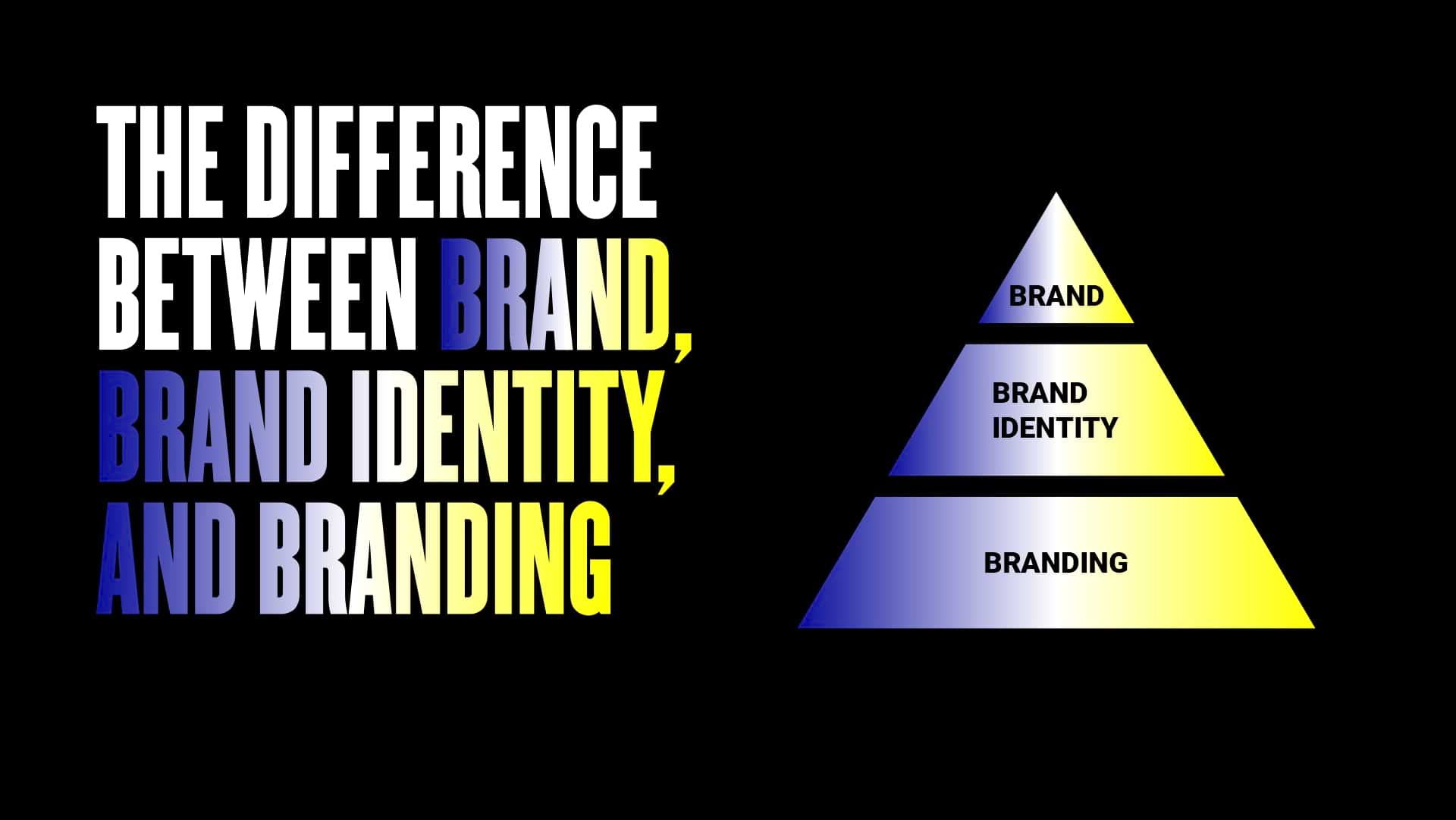Branding
Brand vs Brand Identity vs Branding: Essential Insights for Startups and Entrepreneurs
09.02.2025
By shaikh asif

Branding
09.02.2025
By shaikh asif
In today's competitive market, understanding the nuanced differences between a brand, brand identity, and branding is crucial for any business striving for success. These terms are often used interchangeably, yet they represent distinct aspects of a company's public image and strategy. This comprehensive guide will clarify these differences and provide practical insights for startups, entrepreneurs, CEOs, and business leaders. At Alitestar, we specialize in crafting compelling brands, cohesive brand identities, and strategic branding initiatives that drive business growth and recognition.
A brand is the perception of a company or product in the minds of consumers. It goes beyond logos and slogans; it encompasses the emotions, experiences, and expectations associated with a business. Your brand is essentially the reputation of your company and the promise you make to your customers.
Components of a Brand
Values: The core principles and beliefs that drive your business. They guide decision-making and shape company culture.
Mission: The purpose of your company. It defines what you aim to achieve and how you intend to make an impact.
Vision: The long-term goal of your company. It outlines what you aspire to become in the future.
Emotional Connection: The feelings and associations that customers have with your brand. This emotional bond fosters loyalty and advocacy.
Practical Tips for Defining Your Brand
Identify Core Values: Reflect on what your company stands for. These values should be evident in all business practices and communications.
Create a Mission Statement: Summarize your company's purpose in a clear, concise statement. This will serve as a guide for all business decisions.
Develop a Vision Statement: Outline your aspirations for the future. This vision will inspire your team and attract customers who share similar goals.
Foster Emotional Connections: Engage with your audience on a personal level. Share stories, values, and experiences that resonate with them.

A study by Nielsen found that 59% of consumers prefer to buy new products from brands familiar to them. This underscores the importance of building a strong, recognizable brand. For example, Apple’s brand is synonymous with innovation, quality, and design excellence. This strong brand identity allows Apple to command premium prices and foster a loyal customer base.
Brand identity is the collection of visual and tangible elements that represent your brand. It includes your logo, color palette, typography, imagery, and other design elements. Brand identity is how you want to be perceived by your audience and ensures consistency across all marketing materials.
Components of Brand Identity
Logo Design: Logo Design is the visual symbol representing your brand. It should be simple, memorable, and reflective of your brand values.
Color Palette: The set of colors that represent your brand. Colors evoke emotions and convey different messages.
Typography: The fonts used in your branding materials. Typography should be consistent and align with your brand personality.
Imagery: The style of images and graphics used. This includes photography, illustrations, and icons that convey your brand’s message.
Brand Voice: The tone and style of your communication. It reflects your brand’s personality and should be consistent across all platforms.
Practical Steps to Create a Strong Brand Identity
Design Your Logo: Work with professional designers or a dedicated branding agency such as alitestar to create a logo that represents your brand values.
Choose Your Color Palette: Select colors that evoke the desired emotions and align with your brand personality.
Select Typography: Pick fonts that are consistent with your brand’s tone and style.
Create Imagery Guidelines: Define the style of images and graphics to be used in your marketing materials.
Establish Your Brand Voice: Develop a consistent tone and style for your communication.
Research by Reboot found that using a signature color can increase brand recognition by 80%. Coca-Cola’s consistent use of red is a prime example. This distinct color, along with their unique logo and typography, has helped Coca-Cola create a strong brand identity that is instantly recognizable worldwide.

Branding is the ongoing process of creating and managing the brand’s identity and perception. It involves strategic actions to shape how the brand is viewed by the public. Effective branding differentiates your business from competitors and builds a loyal customer base.
Components of Branding
Brand Strategy: Brand strategy is the long-term plan for developing a successful brand. It involves defining your target audience, positioning, and value proposition.
Marketing Campaigns: Initiatives designed to promote your brand and communicate its values. These can include advertising, social media, and content marketing.
Storytelling: Crafting a narrative that resonates with your audience. A compelling brand story can create an emotional connection and enhance brand loyalty.
Customer Experience: The overall experience customers have with your brand. This includes interactions at all touchpoints, from online engagement to in-store visits.
Practical Steps to Implement Effective Branding
Develop a Brand Strategy: Outline your target audience, positioning, and value proposition.
Launch Marketing Campaigns: Use various channels to promote your brand and communicate its values.
Tell Your Brand Story: Craft a narrative that resonates with your audience and creates an emotional connection.
Enhance Customer Experience: Ensure a consistent and positive experience at all touchpoints.
Nike’s "Just Do It" campaign is a benchmark in effective branding. Launched in 1988, it transformed Nike from a niche sports brand to a global icon. The campaign focused on inspirational storytelling and resonated deeply with consumers, driving brand loyalty and sales. Studies have shown that consistent branding across all platforms can increase revenue by up to 23%.

While brand, brand identity, and branding are distinct concepts, they are closely interrelated and support each other. The brand represents the emotional connection and reputation. Brand identity is the visual and tangible manifestation of the brand. Branding is the strategic process of building and managing the brand and its identity.
Visual Representation
To illustrate this, imagine a three-layered pyramid:
Top Layer (Brand): Represents the perception and emotional connection.
Middle Layer (Brand Identity): Encompasses the visual and tangible elements like logo, colors, and typography.
Bottom Layer (Branding): The strategic actions and processes that shape and maintain the brand and its identity.

Building a Brand
Define Your Brand Values: Identify the core principles that will guide your business.
Craft Your Mission Statement: Clearly articulate your company’s purpose and objectives.
Develop Your Vision Statement: Outline your long-term goals and aspirations.
Creating Brand Identity
Design Your Logo: Work with professional designers or a dedicated branding agency such as alitestar to create a logo that represents your brand values.
Choose Your Color Palette: Select colors that evoke the desired emotions and align with your brand personality.
Select Typography: Pick fonts that are consistent with your brand’s tone and style.
Create Imagery Guidelines: Define the style of images and graphics to be used in your marketing materials.
Establish Your Brand Voice: Develop a consistent tone and style for your communication.
Executing Branding
Develop a Brand Strategy: Outline your target audience, positioning, and value proposition.
Launch Marketing Campaigns: Use various channels to promote your brand and communicate its values.
Tell Your Brand Story: Craft a narrative that resonates with your audience and creates an emotional connection.
Enhance Customer Experience: Ensure a consistent and positive experience at all touchpoints.
Introduction to Alitestar
At Alitestar, we specialize in transforming businesses into powerful brands. Our expertise lies in crafting compelling brands, cohesive brand identities, and strategic branding initiatives.
Services Offered
Branding: Comprehensive branding services to establish and manage your brand’s identity and perception.
Brand Strategy: Strategic planning to define your brand’s direction and positioning.
Design: Premium design services for logos, marketing materials, and digital assets.
Case Studies
Project Runtiva: We developed a strong brand identity and strategy for runtiva, resulting in increased brand recognition and customer engagement.
Agriculture Branding: Helped agriculture startups create cohesive brand identities, boosting their market presence and customer loyalty.
Understanding the differences between brand, brand identity, and branding is essential for building a successful business. By defining your brand, creating a strong brand identity, and executing effective branding strategies, you can differentiate your business and foster a loyal customer base. At Alitestar, we are dedicated to helping you achieve these goals with our premium quality services. Contact us today to start your branding journey.


Shaikh Asif is an Award-winning designer, director, strategist, and educator. He’s the Lead Strategic Brand Designer and Art Director of The Alitestar— a strategic branding and design agency that helps startups, ambitious CEOs, and passionate entrepreneurs to achieve success and ultimately create unforgettable brand experiences.